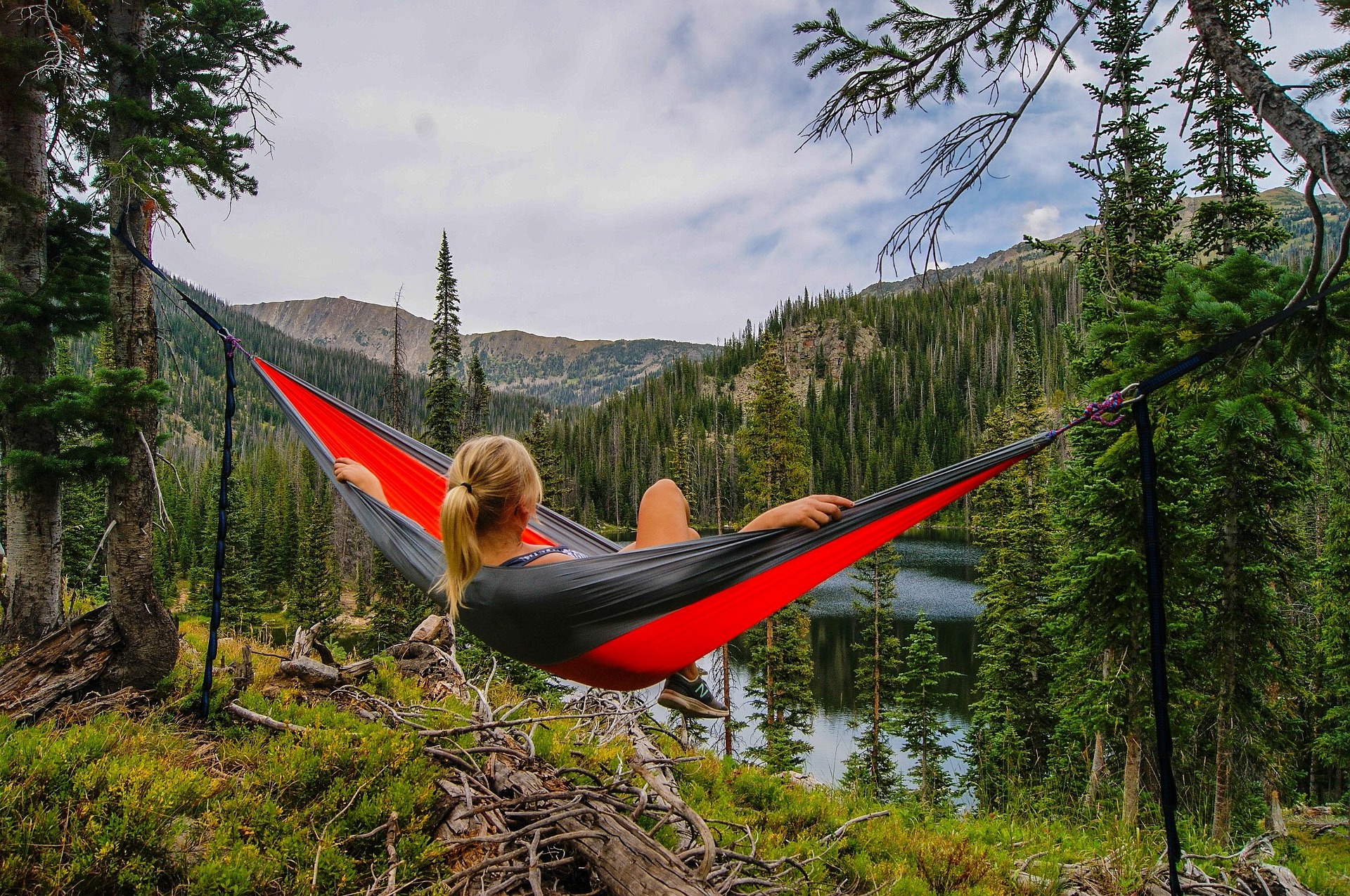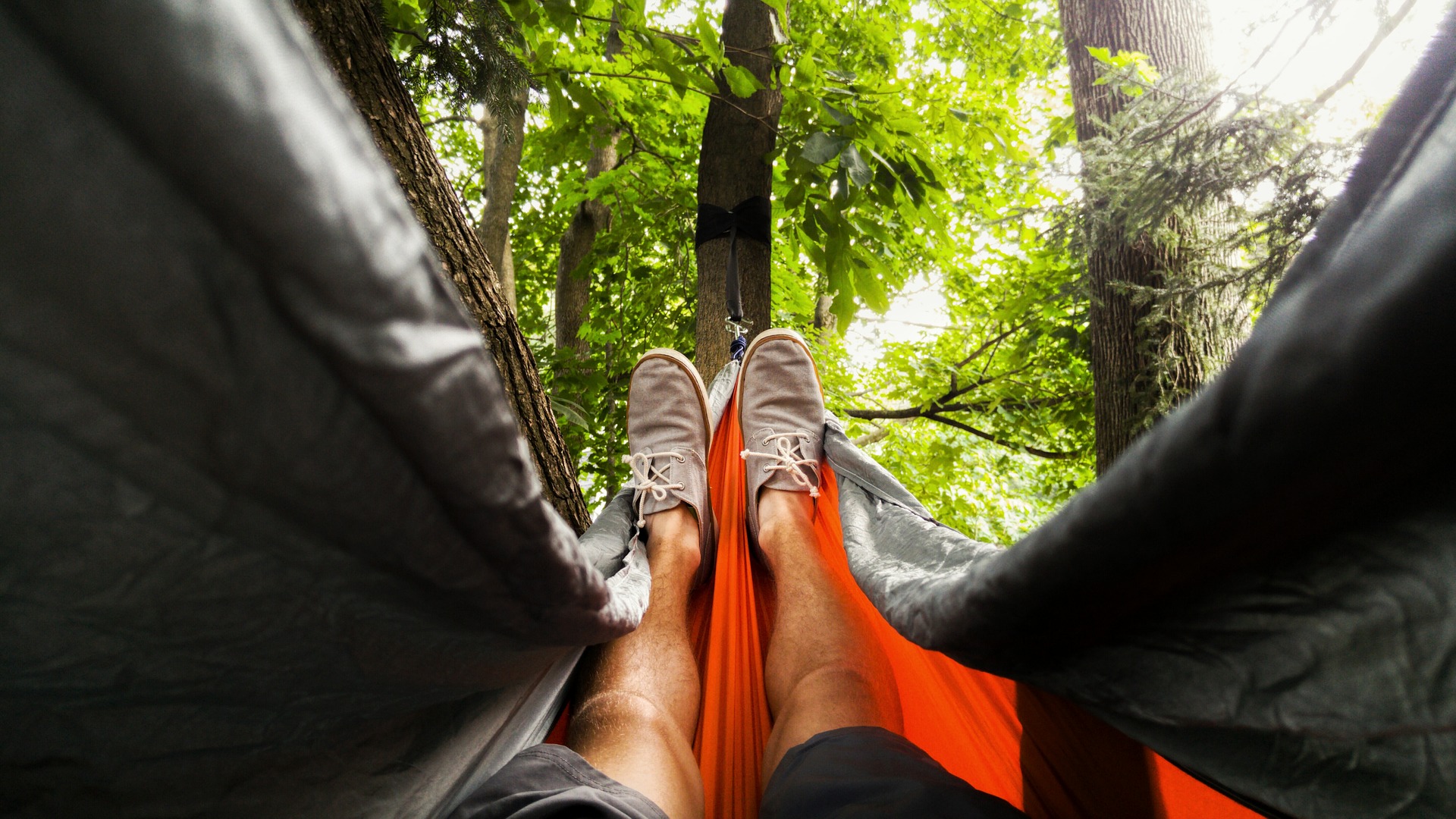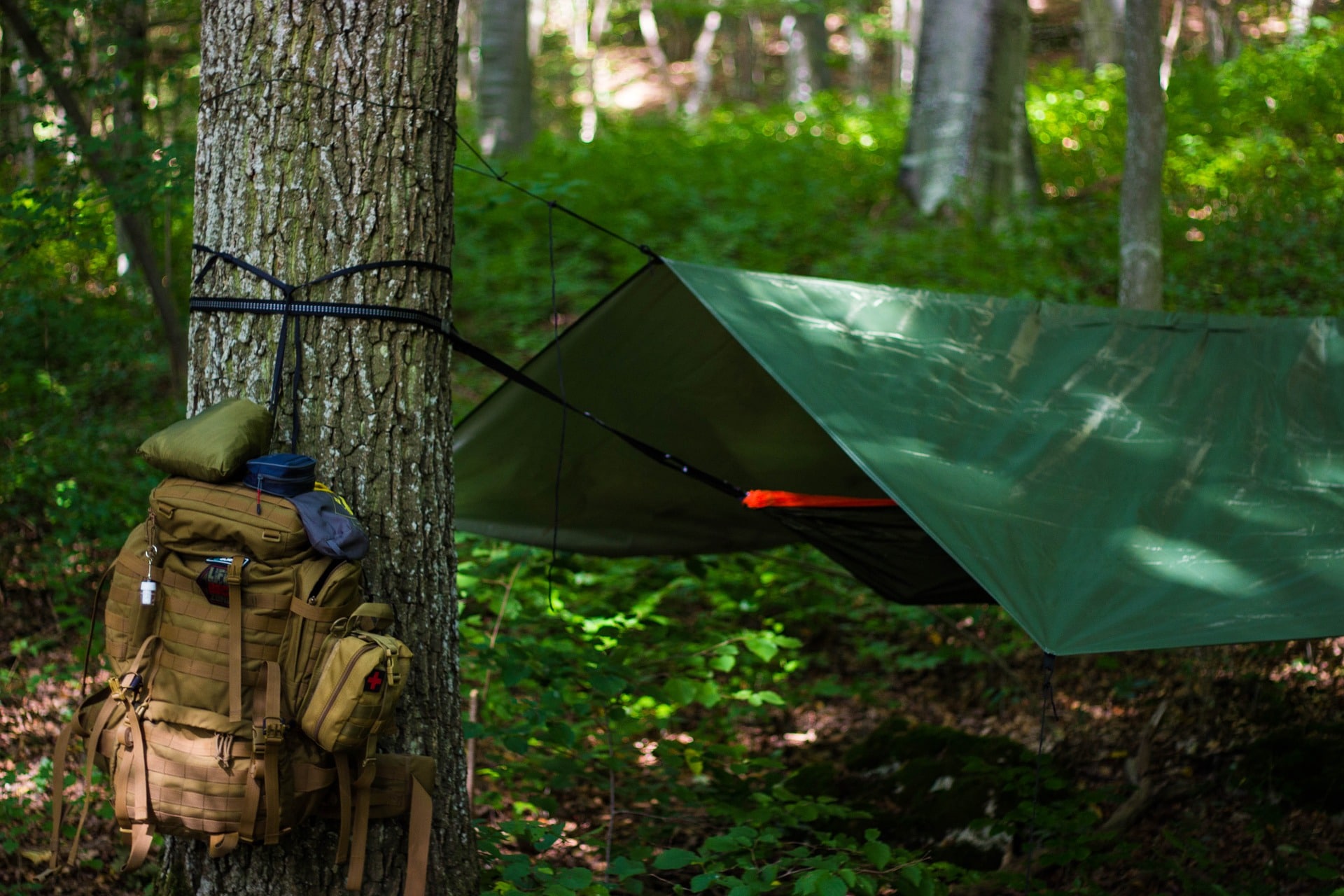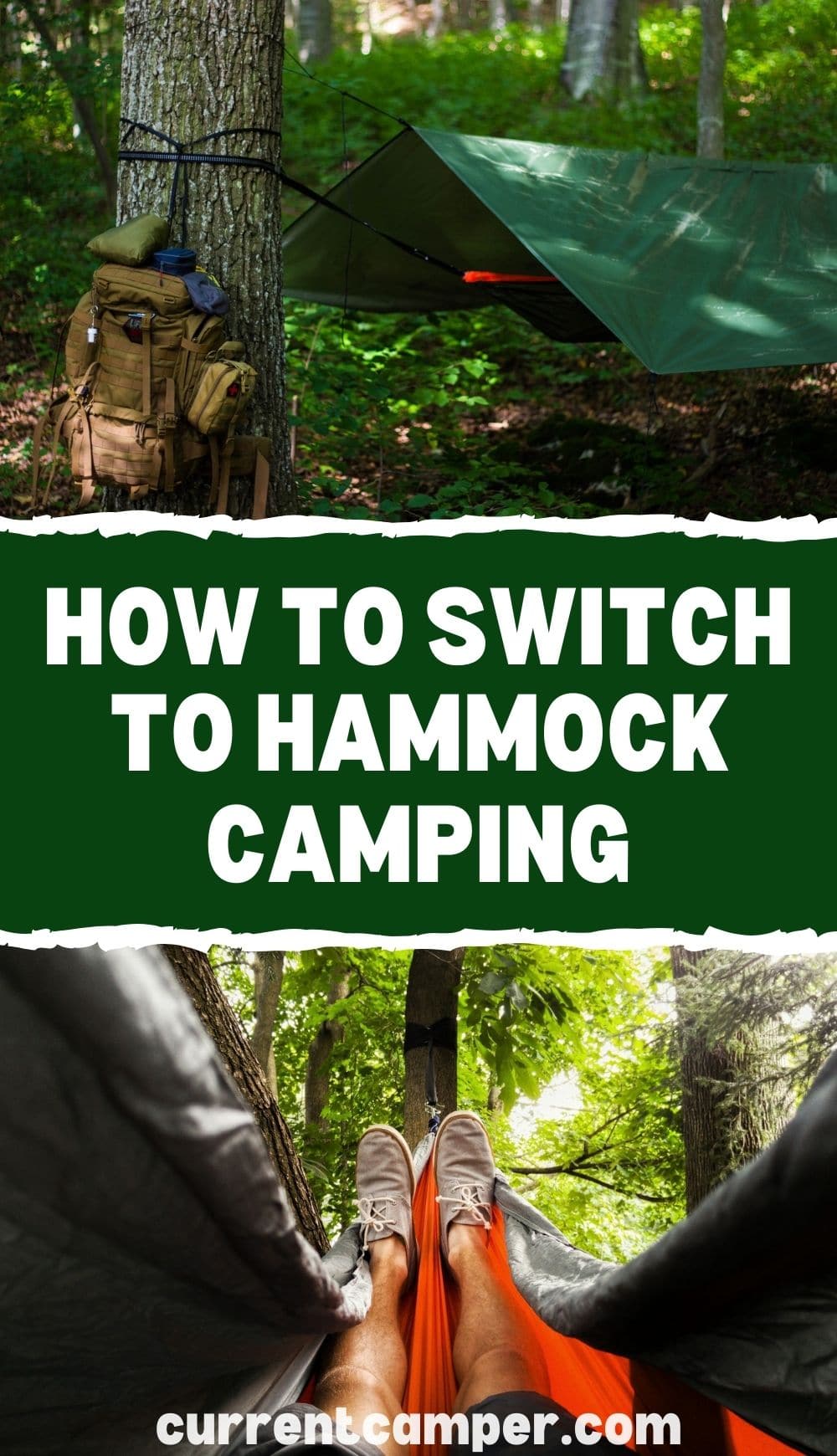Hammock camping can be the best way to take full advantage of an outdoor trip while leaving plenty of room at your campsite.
In this article, we break down what you need to know about hammock camping and why many are taking the hammock over tent camping.
Some hikers love their hammocks so much that they’ve thrown their tents out completely and made the switch to full-time hammock camping.
Switching to hammock camping isn’t difficult, but it isn’t as easy as swapping your favorite camping hammock out for your tent either.

Below we’ll cover the reasons you might want to consider giving hammock camping a try during your next hike and camping trip, as well as all the gear you’ll need to elevate your camping experience.
Why You Should Consider Hammock Camping
There are several reasons why so many backpackers and car campers alike have decided to give hammock camping a try.
For one, a hammock camping setup is almost always lighter weight than a traditional tent system.
Without the need for poles or any of the extra fabric that comes along with a traditional tent, a hammock system also packs down smaller than a tent, which frees up additional space inside your pack or allows you to use a smaller and lighter pack altogether.
It’s also worth pointing out that you can camp in a hammock anywhere you find sturdy trees, regardless of what’s on the ground beneath you.
That means no more sleeping on rocks or branches, no more worrying about thorns or other sharp objects poking holes in your sleeping pad, and no more sliding around on uneven ground.
And, of course, you still get all the other benefits of bringing a hammock along with you on the trail. It’s a comfortable place to relax, doubles as the most comfortable camp chair you’ve ever had, and takes little to no time to set up.
Assuming your interest is piqued, here’s what you need to make the switch to hammock camping.
What You Need To Get Started
Unfortunately hammock camping isn’t as easy as crawling into your sleeping bag and calling it a night. There are a few extra items and accessories you’ll need to turn a hammock into a full-fledged shelter.
Hammock
This one might seem obvious, but you’ll be needing a hammock if you don’t have one already.
Generally speaking, any camping hammock will work here so long as it’s well-built and comfortable to lay in, but of course there are a range of options out there.
When you’re shopping for a camping hammock, you’ll want to keep both the weight and size in mind if it’s going into your backpack.
If you can comfortably sleep in an ultralight hammock, for instance, by all means go for it. Many campers will find that the lighter a hammock gets however, the less room it has to stretch out in.
Most hammock campers like to lay off-center in their hammocks for maximum comfort (about a 30-degree angle), but smaller hammocks often don’t have the space for off-center sleeping.
I recommend laying in a few different hammocks before deciding on one based solely off it’s dimensions and features.

Straps/Suspension
Once you choose a hammock, it’s time for a hammock suspension system.
Some hammocks come with suspension straps included, but they may or may not be ideal for your setup.
For starters, any straps you use should be about an inch wide (if not wider) to ensure you aren’t damaging the trees you hang them from. Many budget models come with simple paracord-type ropes that dig into tree bark under pressure. We stick to “leave no trace” principles here at Current Camper, so I’ll urge you to steer away from these.
Adjustment is an important aspect of your strap system as well.
Straps with pre-made sizing loops work in a pinch, but many fall short of the perfect “hang” angle for optimum comfort. Look for a suspension system with a customizable adjustment. The best (and most costly) out there don’t even require knots.
Insulation
Because hammocks hang off the ground, they allow air circulation both above and underneath them.
You sleeping bag provides insulation and warmth from the air above, but loses its ability to insulate from the bottom the moment you compress it by laying on top of it.
For that reason, you need some kind of insulation system with layers for your hammock.
The easiest and most cost effective way to insulate your camping hammock is to just throw your sleeping pad inside it before you crawl in.
A typical air-filled sleeping pad gets the job done, but it won’t conform to the steep walls of a hammock too well. These get you through the night fine, but they’re a little awkward.
Closed cell foam pads are an inexpensive alternative, and their shape is customizable to better fit the inside of your hammock.
If you want the best of the best, you can also look into hammock quilts.
Hammock quilts (or an underquilt) are essentially insulated blankets that rest underneath your hammock. They help trap heat inside and keep cold weather drafts out. They’re typically made from synthetic insulation, which means they don’t pack down particularly well. Premium down options are available as well, if you’re willing to keep up with them.
Tarp
Tarps are what turn your average camping hammock into an all-weather shelter.
Any waterproof tarp with adequate anchor points will do, but of course there are ultralight options available for the gram-counters out there.
Hammock tarps are typically draped over a ridgeline and staked out using guylines to keep rain and wind at bay while you sleep.
Generally speaking, a good camping tarp has at least six anchor points. The two in the middle run in-line with your ridgeline, and then one on each of the four corners allows proper tensioning with guy lines and stakes.

Bug Net
In the early or late seasons you can often get away with sleeping in the open. During mosquito season however, a bug net is absolutely essential if you plan on getting a decent night’s sleep.
There are two common types of bug net systems out there.
The first is a “top only” net, which seals off the opening of your hammock from bugs. Many purpose-built camping hammocks either come with bug nets that attach directly to your hammock, or offer them as add-ons at an additional cost.
The second type creates a full bubble around your tent, shielding you from the bottom and completely sealing you off from bugs all together.
This is usually your best bet, especially if your hammock doesn’t include an integrated attachment for a net.
Odds And Ends
Aside from those five main components, there are a few other items you’ll want to be sure you’ve got on hand.
Stakes, for instance, are needed if you’ll be flying a tarp of any description in case of inclement weather. I recommend always bringing one or two extra along as backup and to provide some alternative means for staking out your tarp.
Guy lines are another essential for securing your tarp from serious rain and wind. Many dedicated hammock camping tarps will come with guy lines, but any reliable set will do.
Rope or paracord is also needed for running the ridgeline above your hammock that your tarp will hang from. Many bug nets also work best with their own ridgeline, so make sure you bring plenty for your setup.
READ NEXT: Your Complete Guide To Backpacking Rain Gear
Pin it!
